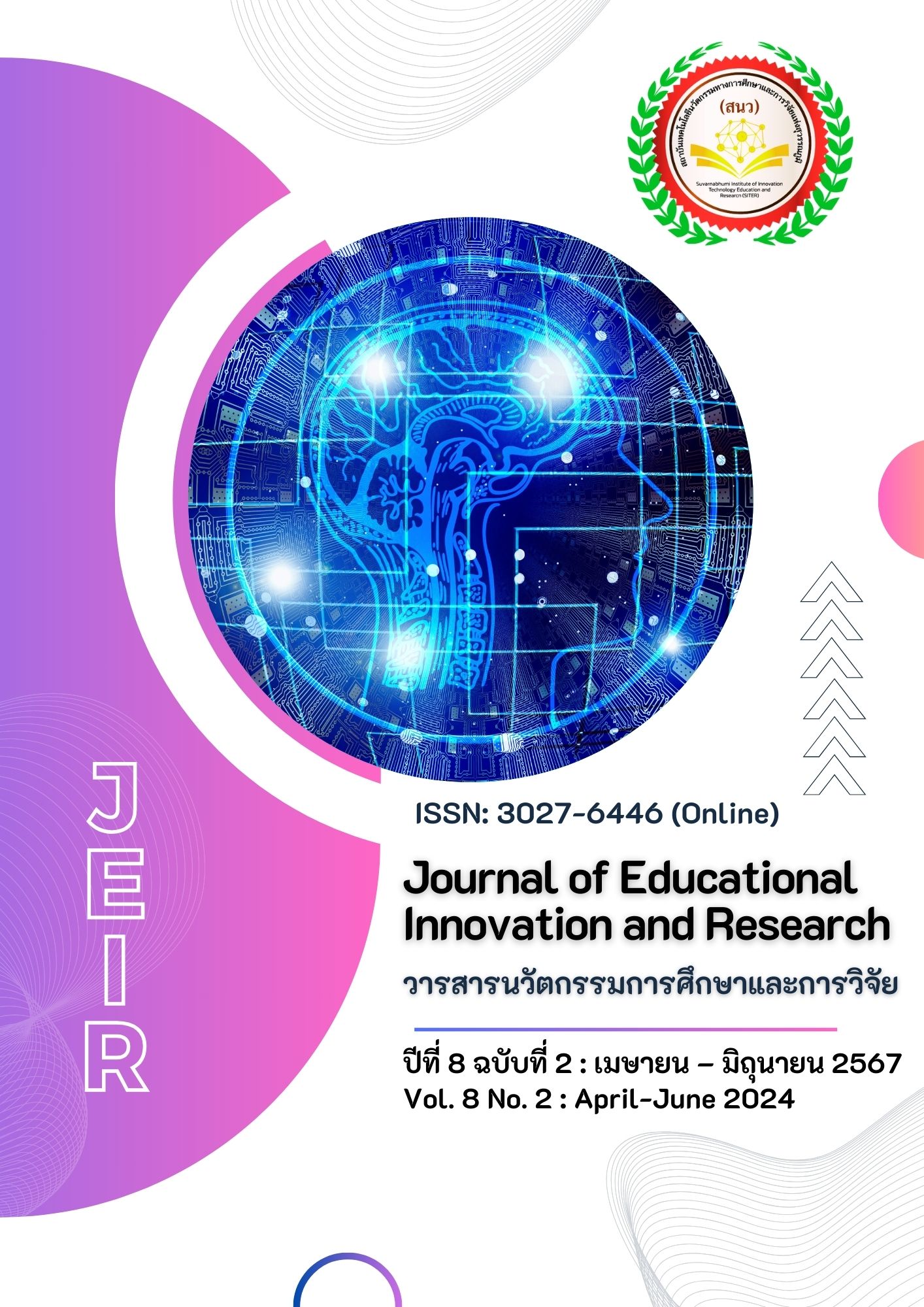รูปแบบการลดต้นทุนการปลูกหม่อนเลี้ยงไหม กรณีศึกษา เกษตรกรสมาชิกศูนย์หม่อนไหมเฉลิมพระเกียรติ จังหวัดขอนแก่น
Main Article Content
บทคัดย่อ
บทความนี้มีวัตถุประสงค์ 1 เพื่อศึกษาต้นทุนทั้งหมดในการเลี้ยงไหมของเกษตรกรเลี้ยงไหม 2 เพื่อศึกษารายได้ของเกษตรกรในการปลูกหม่อนเลี้ยงไหม และ 3 เพื่อศึกษารูปแบบวิธีดำเนินการลดต้นทุนและเปรียบเทียบรายได้จากกิจกรรมลดต้นทุน ในด้านการวิเคราะห์ จำแนก ต้นทุนของการเลี้ยงไหมของเกษตรกร รูปแบบการวิจัยเชิงผสมผสาน ใช้แนวคิดหรือทฤษฎี วิเคราะห์ห่วงโซ่คุณค่า หลักการบริหาร 4 M และ ทฤษฎีต้นทุนเป็นกรอบการวิจัย กลุ่มผู้ให้ข้อมูลหลัก คือ เกษตรกรปลูกหม่อนเลี้ยงไหม ผู้เชียวชาญที่เกี่ยวข้องการปลูกหม่อนเลี้ยงไหม จำนวน 17 คน.เครื่องมือที่ใช้ในการวิจัย คือ 1) แบบสัมภาษณ์ 2) แบบสังเกตและการวิเคราะห์เนื้อหาแล้วเขียนบรรยายสรุปผลการวิจัยเชิงพรรณนา ผลการวิจัยพบว่า
1. เกษตรกรมีต้นทุนในการปลูกหม่อนเลี้ยงไหม 3 ต้นทุน ได้แก่ ต้นทุนทางตรง ต้นทุนผันแปร และ ต้นทุนแฝง 2. การปลูกหม่อนเลี้ยงไหมมีต้นทุนรวมที่สูงและส่งผลให้รายได้เกษตรกรลดน้อยลง 3. ผลวิจัยพบว่าวิธีการลดต้นทุนกระบวนการเลี้ยงไหม 3 รูปแบบ ได้แก่ 1) วิธีการประยุกต์นำทรัพยากรมาปรับใช้ 2) การนำผลผลิตส่วนเกินจากกระบวนการมาแปรรูปใช้ 3)การนำรูปแบบเทคโนโลยีมาใช้ในกระบวนการ
ข้อค้นพบจากงานวิจัยนี้ในส่วนรูปแบบการลดต้นทุนที่สำคัญได้แก่ 1) วิธีการประยุกต์นำทรัพยากรมาปรับใช้ 2)การนำผลผลิตส่วนเกินจากกระบวนการมาแปรรูปใช้ 3)การนำรูปแบบเทคโนโลยีมาใช้ในกระบวนการ
Article Details

อนุญาตภายใต้เงื่อนไข Creative Commons Attribution-NonCommercial-NoDerivatives 4.0 International License.
เอกสารอ้างอิง
Abhisitpinyo, B. (2013). Cost Accounting. panda learning book.
Arpornrat, C. (2015). Breeding for Increase Yield and Quality Yield of Thai Silkworm Hybrid Use for warp in silk cloth handicraft model. https://qsds.go.th/newqssckkm/wpcontent/uploads/sites/ 108/2019/01/601010re.pdf
Charoensinolan, C. (2000). Development Discourse: Power Knowledge Truth Identity and Others. Vipasa Publishing.
Cheawjindakarn, B. (2018). Qualitative Case Study Research Techniques. liberal arts journal, 13(25), 103-118.
Chumket, C. (2015). Perception and Development of Social Entrepreneur in Community Enterprise Management in Western Region of Thailand. Journal of Politics, Administration and Law, 8(2), 293-322.
Denzin, N.K. (1978). The Research Act: A Theoretical Introduction to Sociological Methods. McGraw-Hill.
Keeyangrungreong, N., Nettansakul, N., Seangow, N., Sigtong, P., Sittioum, R., Naksap, S., Tedmaha, S. and Jaroenjit, S. (2019). The cost and benefits of sericulture farmers in Huaihai Village, Huaiha sub-district, Nakhon thai district,Phisanulok province. Journal of Management Science Phibunsongkhram Rajabhat University, 1(2), 61-74.
Khammeerat, D., Dokthaisong, B. and Maluleem, I.(2009). Management strategies of NEC. Tokin Company Electronics (Thailand).
Khantee, A., Keawta, D., Prapaipanich, H., Kunathum, K., Wonrawongsomkam, K., Sunjuntuck, L., Virodsakul, P., Mayteentarangson, P., Inchueachan, S., Koonyotying, S., Wangkawan, S. and Sinlapachai, T. (2017). Study on Cost and Return of Silk Production. www.qsds.go.th/research/file/281.pdf
Khon Kaen Provincial Agriculture and Cooperatives Office. (2017). Agricultural Knowledge. http://www.grad.vru.ac.th/download4/141.pdf
Lilavanichakul, A., Watcharapanyawong, K., Techamatheekul, K. and Choedchuthirakun, N. (2020). Farmers’ Profitability based on Thai Silk Value Chain for Development of Community Sericulture Enterprises in Nakhon Ratchasima Province. Suranaree Journal of Technology, 24(2), 25-49.
Lincharearn, A. (2018). Qualitative Data Analysis Techniques. Journal of Educational Measurement, 17(1), 17-29.
Macmillan, T.T. (1971). The Delphi Technique. Paper Presented at the annual meeting of the California Junior Colleges Associations Committee on Research and Development, Monterey, California. (May 1971), 3-5.
Mungmai, R., kuutha, W. and Wannasathit, R. (2020). Study on Cost and Benefit of Mulberry Farming: A Case Study of Weaving Community Enterprise in Nong-Bo Subdistrict, Ubon Ratchathani Province. Journal of Management and Development Ubon Ratchathani Rajabhat University, 8(2), 79-92.
Nanua, S., Nithichaianan, N. and Supannafri, A. (2020). Development Guidelines of Traditional Silk Products of Khmer Ethnic Group to Increase Value from the Community Local Economy. Journal of Local Governance and Innovation, 4(3), 234-248.
National Statistical Office. (2019). Annual Statistical Report. http://www.nso.go.th
Pipatsit, C. (2011). Economic and Financial Analysis. https://archive.lib.cmu.ac.th/full/T/2557/econ40457 ns_ch3.pdf
Srithanyalak, T. (2018). Khon Kaen, the Madmee City of the World. https://www.creativethailand.net/ en/video/detail/359
Wechagarn, A., Choenkwan, S. and Kiatsuranont, P. (2020). Needs for Extension on Mulberry Cultivation and Silkworm Rearing of Farmers in Si Sa Ket Province. KHON KAEN AGR. J., 48(2), 369-380.


